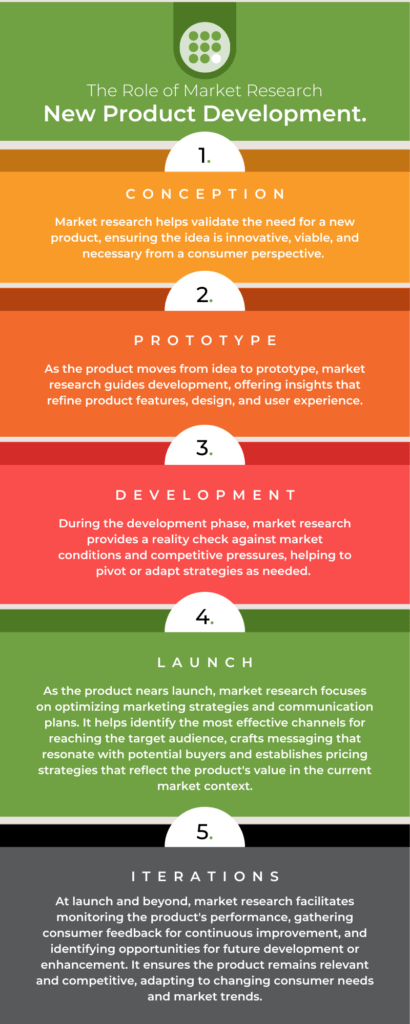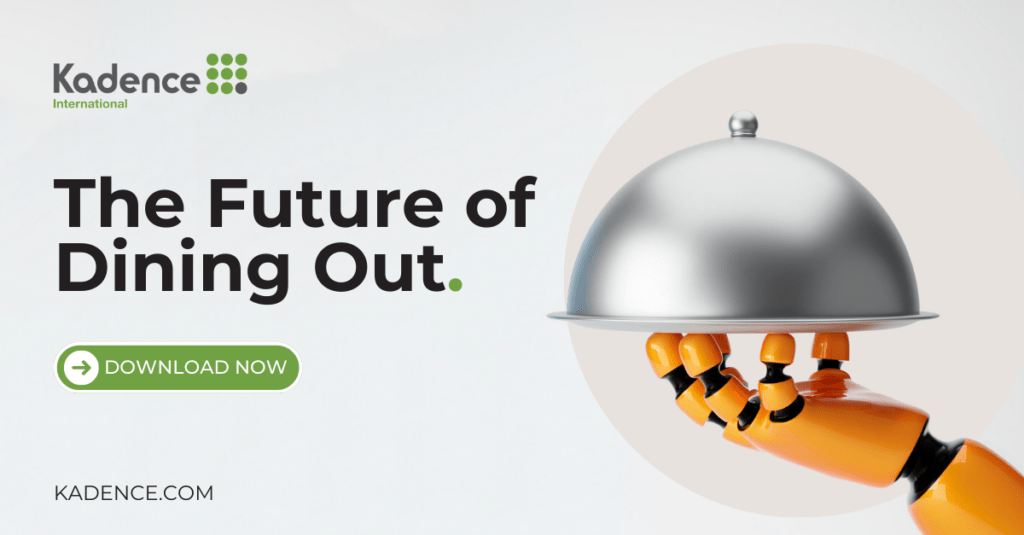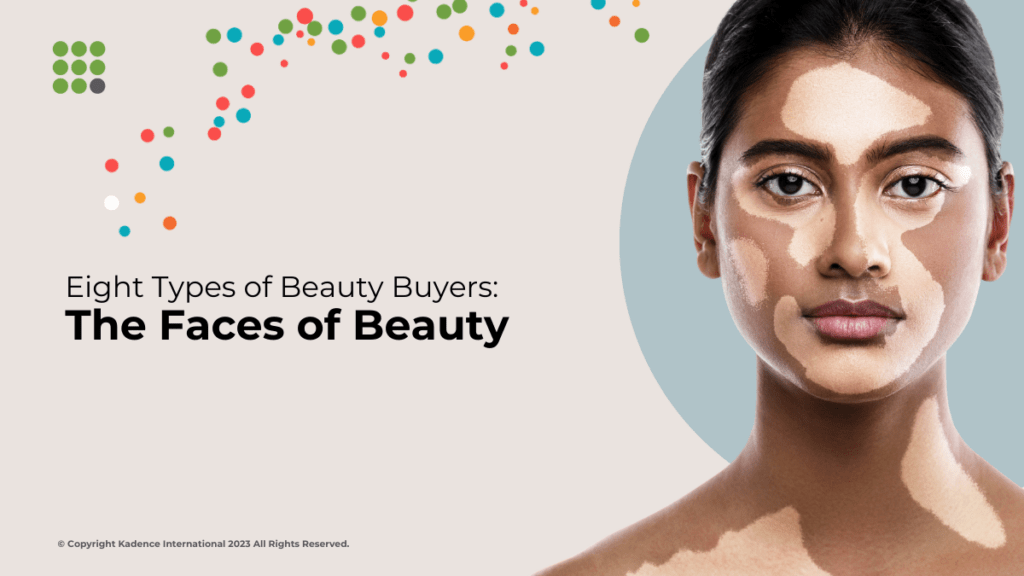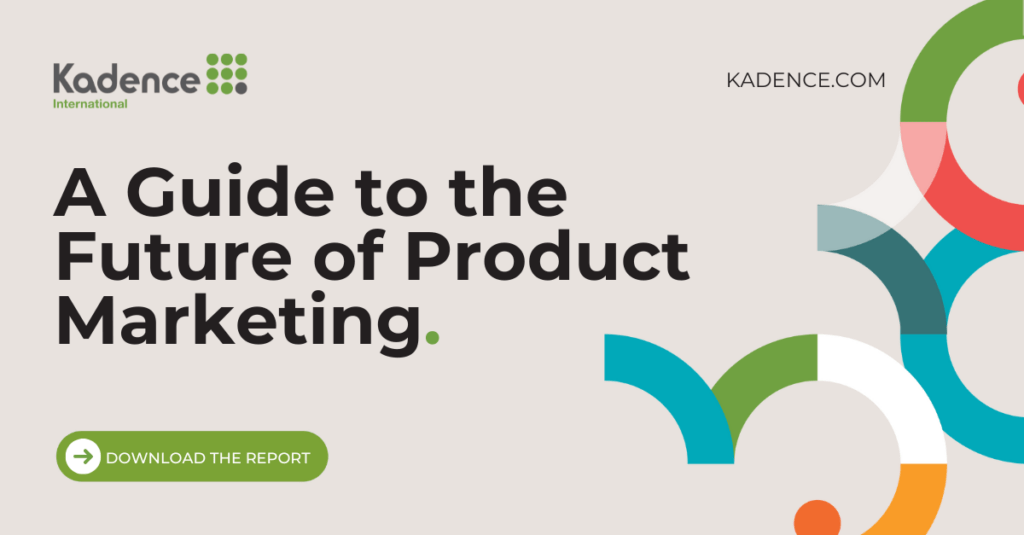A tech company buzzes with anticipation over a groundbreaking product idea promising to redefine its market. Behind the scenes, excitement unites teams across departments, from engineering drafting the first blueprints to marketing strategizing the big reveal. There’s a palpable energy as developers discuss potential features, designers brainstorm aesthetics, and sales teams forecast demand.
Nothing energizes organizations more than launching a new product. This exciting phase boosts team morale and shareholder confidence and sharpens the competitive edge of brands, setting them apart in a crowded marketplace.
However, this initial euphoria can be short-lived as the journey from concept to market often encounters hurdles, like products losing focus, teams grappling with burnout, and innovations arriving too late.
So, why do products often miss the mark?
Here are some common pitfalls of New Product Development:
- Lack of Product Uniqueness: A product might lack the distinctiveness to stand out without exploring a comprehensive range of solutions. This risk magnifies when an organization rushes to lock down a concept without considering various perspectives or potential market shifts.
- Shifting Market Realities: A common pitfall is failing to account for market changes or making assumptions about distribution channels. This can lead to a project that starts with a simple concept but ends up burdened with unnecessary features, prolonging development and leading the product astray from its original mission. For instance, a start-up in the sustainable energy sector might begin designing a basic solar panel solution but end up integrating smart technology features that delay the project and dilute its core value proposition.
- Technical Hurdles Overlooked: Overestimating a company’s technical prowess or underestimating the project’s complexity can lead to significant delays. A tech firm developing an advanced AI-driven analytics platform might be stalled by unforeseen technical challenges, lacking the necessary expertise or innovations to proceed as planned.
- Function Misalignment: Discrepancies between different departments’ expectations and capabilities can derail a product’s development. An example is a company designing a revolutionary health tracker that requires cutting-edge manufacturing techniques, which the company’s factories cannot produce at scale or within cost targets.
- Underestimating User Experience Design: Failing to prioritize user experience design can result in a product that’s technically sound but difficult or unpleasant to use. Consider a software company developing a powerful new project management tool that is too complex for the average user, leading to low adoption rates despite its advanced features.
- Neglecting Regulatory Compliance: Overlooking the regulatory requirements specific to the industry can cause significant setbacks or even halt a product launch. A pharmaceutical company developing a new drug might encounter delays if it fails to align its development process with stringent regulatory standards.
Countless new products go nowhere, and all have one root cause: inadequate Market Research.
Launching a product without understanding the target market’s needs and preferences can lead to misaligned product features. For instance, a food and beverage company might launch a new energy drink without realizing its target demographic prefers natural ingredients over synthetic supplements, resulting in poor sales.
While no strategy can eliminate product development uncertainties, thorough planning, grounded in comprehensive market research and cross-functional collaboration, can navigate these complexities more effectively.
Market Research: The Compass of New Product Development
So, amid this whirlwind of new product development activity, one tool ready to guide the brand’s efforts toward success is undoubtedly market research —the unsung hero poised to turn their vision into a market-ready reality.
Market research provides a foundation for decision-making that can mean the difference between a product’s success and failure. It offers insights into what consumers truly want, not just what a company thinks they need. This intelligence informs product design, positioning, and marketing strategies to introduce the product to the market.
It also identifies the size of the opportunity, helping to forecast demand and potential revenue, thereby shaping investment decisions and prioritizing features based on what will deliver the most value to the target audience.
Consider the development of the first smartwatches. Early entries into the market focused primarily on technology enthusiasts, offering features like message notifications, app integrations, and Bluetooth connectivity.
However, market research conducted by a leading technology company revealed a broader potential audience: the health-conscious consumer.
This insight led to a pivotal shift in product development strategies. The next generation of smartwatches incorporated advanced health monitoring features such as heart rate sensors, sleep trackers, and even electrocardiogram (EKG) capabilities.
The result?
A product that resonated deeply with consumers, transcending its original tech-savvy base to reach a broader audience that valued health and wellness. This expanded market appeal led to increased sales, higher market penetration, and the establishment of the smartwatch as a must-have accessory for the health-conscious individual.
When brands understand the consumer’s voice, they can tailor their innovations to meet real, sometimes unarticulated, needs.
The Scope of Market Research throughout the product lifecycle
Market research permeates every facet of the product development process, from the initial conception of an idea to its launch and market entry.
Critical components of market research in this context include:
- Market Analysis: Understanding the market size, growth, and trends to identify opportunities and challenges.
- Customer Insights: Gathering data on customer demographics, preferences, needs, and buying behaviors to tailor the product accordingly.
- Competitive Intelligence: Analyzing the competitors’ strengths, weaknesses, market positions, and strategies to identify differentiators and market gaps.
- Concept Testing: Evaluating consumer responses to the product concept to validate its appeal and refine its features.
- Pricing Strategy: Assessing the market to set a competitive price that aligns with customer expectations and value perceptions.
- Distribution Channels: Identifying the most effective ways to reach the target market, considering both traditional and digital channels.
- Promotional Strategy: Developing marketing strategies based on insights into customer preferences and behaviors.
Types of Market Research Methodologies Used in New Product Development.
Quantitative and Qualitative Research are two primary market research methodologies in informing new product development. These approaches, distinct in their methods and insights, work in tandem to provide a comprehensive understanding of the market, consumer preferences, and potential product impact.
Quantitative Research is characterized by its ability to gather data that can be quantified and subjected to statistical analysis.
This type of research excels in answering “how many?” and “how much?” questions, providing hard numbers that can inform decisions on market size, consumer demographics, and measurable customer behaviors.
Surveys with closed-ended questions, structured interviews, and secondary data analysis are common methods used to collect quantitative data. The strength of quantitative research lies in its objectivity and the ability to generalize findings across larger populations, making it invaluable for assessing market potential and forecasting demand.
Qualitative Research, on the other hand, delves into the “why” and “how” behind consumer choices and behaviors. It seeks to understand motivations, attitudes, and feelings through in-depth interviews, focus groups, and observation. This type of research is interpretive, providing rich insights into consumer needs, experiences, and preferences that might not be evident through numbers alone.
Qualitative research shines in exploring new concepts, testing product ideas, and uncovering underlying consumer sentiments that can shape product development and positioning.
The role of market research in segmenting customers
Market research helps in identifying various bases for segmenting a market, such as demographics (age, gender, income level), psychographics (lifestyle, values, attitudes), geographic locations, and behavior (purchase habits, usage rates). Companies can uncover patterns and trends that inform how the market can be segmented by analyzing data collected through surveys, focus groups, and other research methods.
For example, a company launching a new fitness app might use market research to discover that its primary audience segments include busy professionals looking for quick workouts, fitness enthusiasts seeking advanced training programs, and beginners needing guidance and motivation. Each of these segments has distinct needs, preferences, and pain points, guiding the app’s feature set, user experience design, and marketing messages.
The role of market research in identifying potential customers
Market research helps not only segment the market but also identify the potential customers within those segments. It provides insights into the characteristics of consumers most likely to purchase the product, their decision-making processes, and the channels through which they can be reached most effectively.
For instance, knowing that busy professionals value efficiency and flexibility, the fitness app company might highlight features such as short, customizable workouts and on-the-go accessibility in its marketing efforts targeting this segment.
The role of market research in analyzing the competition
Market research aids in the identification of direct and indirect competitors, providing a clear picture of the market ecosystem. It involves collecting data on competitors’ product offerings, pricing strategies, distribution channels, marketing tactics, and customer service practices. This information can be gathered through various means, including public records, customer surveys, competitor websites, and social media analysis.
Beyond identifying competitors, market research delves into their performance and strategies. It evaluates their market share, growth trajectories, and the factors driving their success or failure. This analysis helps uncover gaps in the market that the new product can fill, identify areas where competitors are underperforming, and spot emerging trends that could affect competitive dynamics.
Equipped with a thorough understanding of the competitive landscape, companies can strategically position their product to capitalize on market opportunities. Market research informs the development of a unique value proposition (UVP) that differentiates the product from competitors. This differentiation could be based on features, quality, price, customer service, or any combination of factors that resonate with the target audience.
For example, if market research reveals that consumers are dissatisfied with the complexity and user-unfriendliness of existing products in a category, a company could position its new offering as a simpler, more intuitive solution. This positioning directly addresses a gap in the market, appealing to consumers seeking an alternative to the status quo.
How insights from Market Research can inform product differentiation and positioning strategies
Informing Product Differentiation:
Insights from market research pinpoint the areas most valued by consumers and those underserved by current market offerings. For example, suppose research indicates that customers in a particular market seek more environmentally friendly options in a product category dominated by less sustainable choices. In that case, a company can focus on developing a product that uses sustainable materials or practices, addressing a specific consumer need, and differentiating its product from competitors.
Guiding Positioning Strategies:
Market research insights help identify the most compelling way to position a product by understanding the target audience’s values, needs, and perceptions. This can involve emphasizing specific product attributes, benefits, or values that align with the target market’s desires or gaps in the category. For example, if market research reveals a gap in the market for a tech product that combines high performance with user-friendly design for non-tech-savvy users, a company can position its product as the ideal solution for this unmet need, leveraging simplicity and ease of use as key selling points.
Enhancing Competitive Strategy:
Insights from competitive analysis clearly show competitors’ positions and how consumers perceive them. This knowledge allows brands to identify areas of opportunity for differentiation and to develop strategies that leverage their strengths against competitors’ weaknesses. It can also inform decisions on whether to adopt a head-to-head positioning against direct competitors or to find a niche market where the company can dominate.
Tailoring Marketing Communications:
With insights into consumer preferences and competitive positioning, companies can craft targeted marketing messages highlighting their product’s unique benefits and features. This ensures that communications resonate with the intended audience and clearly articulate the product’s unique value proposition, setting it apart from competitors.
How does market research help identify potential risks and challenges in the market?
Market research plays a crucial role in risk mitigation by identifying potential risks and challenges that could impact a new product’s success in the market.
Identifying Market Risks:
Market research helps identify a broad range of risks, including shifts in consumer behavior, emerging competitive threats, regulatory changes, and technological advancements. By keeping a pulse on the market, brands can anticipate changes that might affect the demand for their product or its competitive position. For example, a detailed analysis of market trends might reveal consumers’ growing preference for sustainable products, indicating a risk for products that do not align with environmental values.
Understanding Consumer Sentiments:
Through surveys, social media listening, and other feedback mechanisms, market research gauges consumer sentiments and identifies potential backlash or negative perceptions of a product or brand. This early warning system allows companies to adjust their strategies, messaging, or product features to better align with consumer expectations and avoid potential reputational damage.
Evaluating Competitive Dynamics:
Competitive analysis, a key component of market research, sheds light on the strategies and performance of competitors, helping companies identify risks related to competitive actions. Understanding the competition enables brands to foresee potential market entries by competitors, changes in competitive pricing strategies, or the introduction of substitute products, allowing them to prepare defensive or counter-strategies.
Assessing Regulatory and Compliance Risks:
Market research also plays a vital role in identifying regulatory changes and compliance requirements that could threaten the product’s market entry or expansion. By staying informed about the regulatory environment, companies can ensure their products comply with relevant laws and standards, avoiding costly legal issues and delays.
Testing Market Assumptions:
Concept testing and other research methodologies challenge and validate the assumptions underpinning a product’s development. This critical evaluation can reveal flaws in the product concept, unrealistic market expectations, or misalignments with consumer needs, allowing companies to address these issues before they escalate into more significant risks.
Forecasting Demand and Financial Risks:
Market research helps accurately forecast demand for a new product, a crucial factor in financial planning and risk management. Overestimation of demand can lead to overproduction, excess inventory, and financial strain, while underestimation can result in missed opportunities and an inability to meet market demand. Companies can mitigate financial risks and optimize their supply chain and production strategies through precise demand forecasting.
The role of market research in scenario planning and contingency strategies
Market research is integral to scenario planning and the development of contingency strategies, equipping brands with the foresight and flexibility to navigate future uncertainties and changes in the market landscape. This strategic approach allows organizations to prepare for multiple potential futures, ensuring they can respond swiftly and effectively to various challenges and opportunities that may arise.
Scenario Planning
Scenario planning involves creating detailed narratives about the future based on different assumptions about how current trends, uncertainties, and driving forces could evolve.
Market research provides the empirical foundation for these narratives by offering insights into current market conditions, consumer trends, technological advancements, regulatory environments, and competitive landscapes. By analyzing this data, companies can identify critical variables that might impact their business and construct a range of plausible future scenarios.
For instance, market research might reveal an emerging trend toward eco-conscious consumer behaviors, prompting a company to develop scenarios ranging from mild increases in demand for sustainable products to significant shifts in consumer purchasing patterns favoring green products exclusively. These scenarios enable the company to plan for product innovations, marketing strategies, and supply chain adjustments that align with varying degrees of market demand for sustainability.
Contingency Strategies
Contingency strategies are plans developed to address specific risks or opportunities that might emerge in the future. Market research plays a crucial role in identifying these potential risks and opportunities, allowing companies to devise informed strategies that mitigate threats and capitalize on emerging trends. This process involves understanding the current market, forecasting changes, and assessing their potential impact on the company’s operations, products, and financial health.
Market research can, for example, help a company anticipate potential regulatory changes affecting its industry. Suppose research indicates a likely increase in regulatory scrutiny over product safety standards. In that case, the company can develop contingency plans that include ramping compliance efforts, investing in product innovation to meet new standards, and preparing communication strategies to reassure customers and stakeholders.
Integrating scenario and contingency strategies with overall business planning ensures that market research insights are effectively translated into actionable plans. This integration allows companies to be proactive rather than reactive, setting mechanisms to adapt to market changes quickly. It also supports strategic decision-making by highlighting potential risks and opportunities to consider in the company’s long-term strategy.
The Impact of Market Research on Crafting Effective Marketing Messages and Campaigns
Market research uncovers the emotional and rational drivers behind consumer purchasing decisions, allowing marketers to craft messages that appeal to these motivations.
How Insights into Consumer Behavior and Preferences Guide Marketing Channel Selection and Promotional Tactics
Insights from market research also play a crucial role in selecting the most effective marketing channels and promotional tactics. Understanding where the target audience spends their time, the types of media they consume, and how they prefer to receive information about new products enables companies to allocate their marketing resources more efficiently, choosing channels to reach their audience effectively.
For example, suppose market research indicates that the target demographic for a new fitness app heavily uses social media platforms and engages with influencer content. In that case, the company might prioritize social media marketing and influencer partnerships over traditional advertising channels like TV or print. This strategy ensures that marketing efforts are concentrated where they will have the most impact, increasing visibility and engagement with the target audience.
Additionally, insights into consumer behavior can inform the timing and nature of promotional tactics. For instance, if research shows that potential customers are most receptive to new products at the beginning of the year, a company might time a significant promotional campaign to coincide with New Year’s resolutions, using special offers or trials to encourage adoption.
Feedback Loops and the Role of Market Research in Product Improvement
After a product is launched, the journey of market research does not end but instead enters a new, critical phase. Ongoing market research post-launch is vital for the continuous improvement of the product, ensuring it remains relevant and competitive. This constant research process helps companies capture real-time feedback on how consumers receive the product, identify areas for enhancement, and detect emerging trends that could influence future product iterations.
Integrating customer feedback into product updates and future development cycles is a systematic process that involves several steps. Initially, companies collect feedback through various channels, including direct customer inquiries, online reviews, social media, feedback forms within the product, and user testing sessions. This feedback is then analyzed to identify common themes, patterns, and specific areas for improvement or innovation.
The insights gained from this analysis inform the prioritization of product updates. Critical issues affecting user experience or satisfaction are addressed promptly, while suggestions for new features or enhancements are evaluated for alignment with the product’s strategic direction and market demand. This prioritization ensures that resources are allocated efficiently, focusing on changes impacting customer satisfaction and business objectives.
Integrating customer feedback into the development process often involves cross-functional collaboration between product management, engineering, design, and marketing teams. Regular meetings and feedback loops ensure that customer insights are shared across the organization and that decisions regarding product updates are made with a comprehensive understanding of customer needs.
Once updates are implemented, the cycle continues, with companies seeking feedback on the changes to ensure they have positively impacted the user experience. This iterative process allows constant refinement and adaptation, making the product more robust and competitive.
Example: Software Application Updates
Consider a software company that has launched a project management tool. After launch, ongoing market research and user feedback indicate that while the tool is well-received, users are experiencing difficulties with the mobile app version, particularly its notification system. The company uses this feedback to prioritize an update that improves mobile app notifications, making them more customizable and less intrusive.
The company also identified a request for a new feature that allows integration with third-party calendar apps, a suggestion that came up frequently in user feedback. After evaluating this against the product roadmap and market demand, the company develops this integration, further enhancing the tool’s utility and user satisfaction.
By continually engaging in market research and integrating customer feedback into product updates, the company not only improves its current offering but also lays a solid foundation for future development cycles, ensuring the product remains relevant and continues to meet the evolving needs of its users.
Picking up from where we left off with our tech company’s new product development journey, the initial excitement around their groundbreaking product idea has now been channeled into a series of strategic, informed steps toward realization. The enthusiasm within the company has evolved into a dedicated focus driven by the rich insights gained from their market research. As the product moved from concept to launch, every decision—design tweaks or marketing messages—was backed by data and consumer feedback, ensuring that the final offering met and exceeded customer expectations.
The product launch was just the beginning. Embracing the ethos of continuous improvement, the company remained committed to gathering and acting on customer feedback post-launch. This cycle of feedback and improvement fostered a strong connection with users, who saw their needs and preferences reflected in the product’s evolution.
The tech company’s new product development story shows the power of market research. It demonstrates that success in product development is not just about having a groundbreaking idea but about bringing it to market in a way that resonates with consumers.
Market research is the thread that connects every stage of bringing a new product to market. It ensures that every decision, from conception to launch, is informed, strategic, and aligned with meeting consumer needs and achieving market success.














 Senior Marketing Executive
Senior Marketing Executive Sales & Marketing
Sales & Marketing General Manager PR -Internal Communications & Government Affairs
General Manager PR -Internal Communications & Government Affairs Vital Strategies
Vital Strategies
 Customer Intelligence Director
Customer Intelligence Director